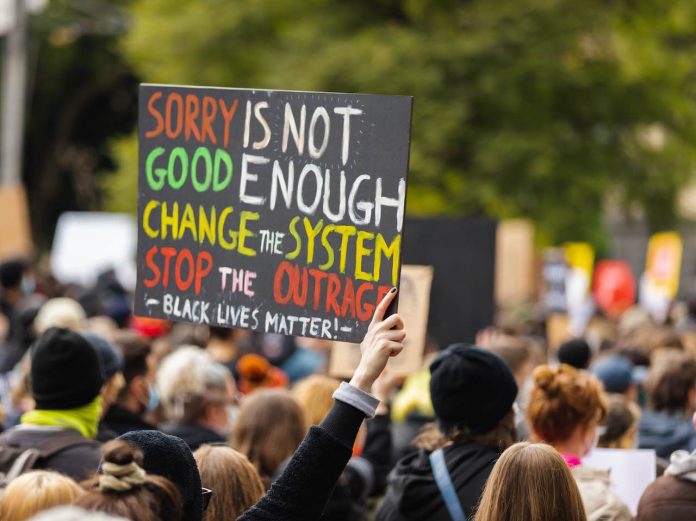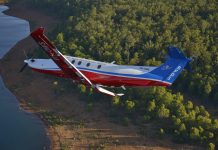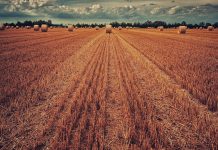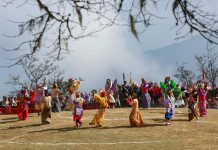
UNLIKE some of my friends, I am not sorry for saying ‘sorry’ to Indigenous Australians. In fact, I see the merit of Western Australia building a suitable monument to Aboriginals.
I see a modern museum, telling and showing the true, rich history of the world’s longest-surviving culture. Warts and all.
Many agreed with Prime Minister John Howard who expressed ‘regret’ for past wrongs but didn’t believe it was our responsibility to apologise for past practices.
But if Indigenous peoples accept a national apology as part-recognition of their past terrible treatment and continuing plight, surely it’s a step in the right direction.
As was the mass walk across Sydney Harbour Bridge, on 28 May, 2000. A few thousand people were expected for the peace march, but more than 250,000 people, Indigenous and non-Indigenous, waving Australian and Indigenous flags, braced the chill wind. The walk took six hours – Australia’s largest-ever political demonstration.
A skywriter created the word ‘Sorry’ in the clear sky. Peace walks followed in Perth, Melbourne and Brisbane.
Over my many three-monthly stays in the north west, I have a strong feeling of a changing tide towards wider recognition of the richness of Aboriginal culture.
Across our north, Indigenous-guided tours, artwork, performances and welcome to country are flourishing. Guided visits to Aboriginal communities have also enlightened enthusiastic visitors from Australia and overseas.
As baby boomers, our generation of whites is ignorant of Aboriginal history. I’m fourth generation West Australian and my Indigenous knowledge is zilch, flowing-on from my forebears. It was never part of our school history lessons or family discussions.
I have seen Aboriginal anger and resentment over my lifetime but mostly passiveness among a clearly-suppressed people. When visiting my grandparents in Albany, a couple of Aborigines would come into the yard and settled down to sleep overnight on the back lawn. We would let them be.
In country WA, Aboriginals off reservations knocked on doors with hands out for food and most farmers and towns people would oblige. If Aborigines were hitching a ride, whites might allow them to hop in the back of the ute or the truck.
Some employers advanced a week’s pay when asked by their regular Aboriginal workers but sometimes the workers went walkabout and didn’t return for the rest of the season – or not at all.
Now we can see it as whites’ tolerance. Tokenism. Whites took little interest in Aboriginal affairs.
What better way to address it than with a modern, purpose-built, interactive Aboriginal-designed museum relating full Aboriginal history including suffering and mistreatment as well as advancements and achievements. Showing wonderful Aboriginal artwork.
Let’s tell these stories, in black and white.
For WA Day, the new boss of Reconciliation WA, Andrew Vlahov, told the public: “Your obligation as a West Australian is to learn a little more, take one step in your own reconciliation journey and make progress. That will have a domino effect.”
Shoulder-to-shoulder with the co-chair of Reconciliation, Aboriginal Carol Innes, Andrew said this includes the tough facts including massacres of Aborigines.
“The impact of intergenerational trauma is still with us.”
Andrew is part of the tide that is turning into our embrace of the truth. Something we can proclaim to the world and not pretend it didn’t exist.
A dedicated museum in Perth where it could be visited by most people will allow us all to indulge in the richness of Aboriginal culture, housed in a building serving as a salute to a unique people and acknowledgment of what has passed including:
Aborigines, returning from WWII, still couldn’t vote. Only from 1962 were all Aboriginals allowed to vote.
In 1991 the Australian Parliament passed an Act creating the Council for Aboriginal Reconciliation to guide the reconciliation process over the rest of the decade.
In 1992 the High Court handed down the Mabo decision, rejecting the doctrine that Australia was terra nullius (land belonging to no-one) at the time of European settlement.
In 1993 Parliament passed the Native Title Act for a national system for the recognition and protection of native title and for its co-existence with the national land management system.
In 1996 the High Court handed down the Wik decision confirming native title rights could coexist with pastoral and leasehold tenures and pastoral leases would not necessarily extinguish native title.
In 1997 the Human Rights and Equal Opportunity Commission published the Bringing them Home report on removing Indigenous children (Stolen Generations) from their parents, recommending an apology.
Corroboree 2000 comprised two events over two days with many Indigenous and non-Indigenous leaders to exchanging commitments leading to the centenary of Federation in 2001.
In 2008, Prime Minister Kevin Rudd issued a formal apology to Indigenous Australians for forced removals from their families by federal and state government agencies.
We’re inching along.
www.nma.gov.au/defining-moments/resources/walk-for-reconciliation
































